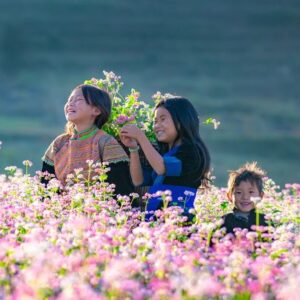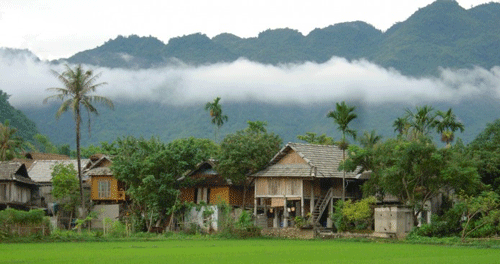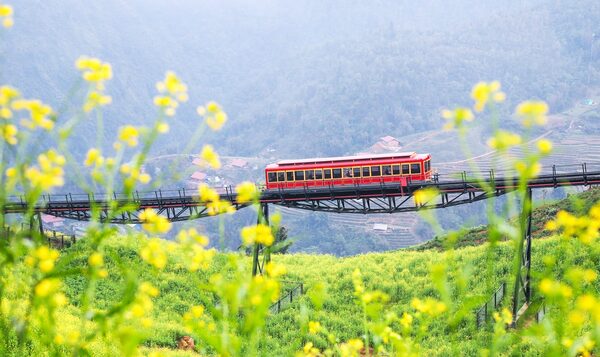| Seasons | Best places to visit |
| Spring (March – May) | Moc Chau, Ninh Binh |
| Summer (June – August) | Cat Ba, Co To, Tam Dao, Pu Luong |
| Autumn (September – November) | Hanoi, Halong Bay, Sapa, Cao Bang, Ha Giang |
| Winter (December – February) | Lang Son, Mai Chau |
Weather and climate features in North Vietnam
North Vietnam experiences a humid subtropical climate with four distinct seasons: spring, summer, autumn, and winter
Spring (March – May): In the North, the temperature gradually rises and the sun comes out every so often. The weather in Spring is warm and humid with drizzling rain sometimes. Traveling to Vietnam in spring, you will have a chance to enjoy a peaceful and tranquil atmosphere.
Summer (June – August): In the summer, due to the effect of monsoon, the Northern area is very hot and humid and experiences high rainfalls. The average temperature is around 28 to 30 degrees Celsius. It can reach 35-37 degrees Celsius some days.
Autumn (September – November): Autumn is the most pleasant time in Northern Vietnam. This season sees a decrease in temperature and rainfall, making the weather cooler and drier. The average temperature is from 20 to 25 degrees Celsius.
Winter (December – February): Weather in Vietnam during winter is different from North to South. Northern Vietnam endures a humid cold weather in the winter. The temperature may drop to below 10 degrees Celsius in the delta area. There may be snow in mountainous areas such as Sa Pa, Mau Son, and Ha Giang.
Best places to visit in the North of Vietnam
Spring season
Moc Chau: Spring is the best time to enjoy flower blooming in Moc Chau. Located in the mountainous Northwest area, Moc Chau is captivating with cool weather around the year and romantic flowery sceneries. Plum flowers and ban flowers can be found in Moc Chau from March to April. Be aware that plum flowers will droop after two or three weeks, so prepare your time!
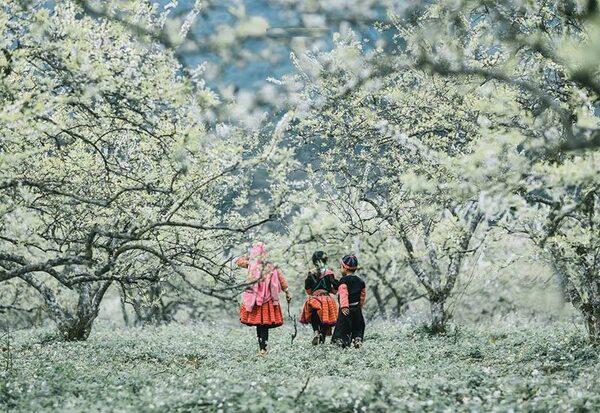
Moc Chau in spring season
Ninh Binh: A Ninh Binh tour will be a highlight of your trip when traveling to Northern Vietnam. Don’t forget to go trekking in poetic Cuc Phuong National Park during butterfly season in April. In May, green rice fields in Tam Coc – Bich Dong turn into winding yellow scenery during the harvest season.
Summer season
Co To Island or Cat Ba Island: It is obvious that summer is the best time to head to a beach, enjoy sunshine, turquoise water, gentle wind and fresh air. Co To Island in Quang Ninh and Cat Ba Island in Hai Phong will amaze you with unspoiled landscapes and friendly people.
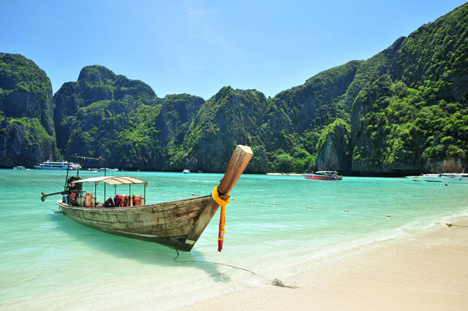
Cat Ba Island
Tam Dao is suitable for paying a visit all around the year. However, if you want to get away from sultry Hanoi, it is recommended that you visit Tam Dao National Park and enjoy pleasant weather when coming to Vietnam in summer.
Pu Luong: 150 kilometers from Hanoi, Pu Luong Nature Reserve in Quan Hoa District is definitely an amazing place for your ecotourism trip to Vietnam. There are two main rice harvest seasons in Pu Luong (in June and October) when rice paddies turn into velvety yellow.
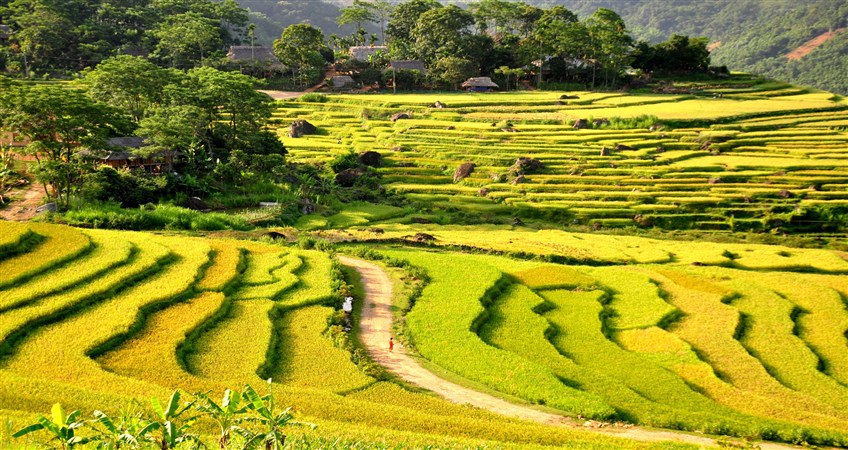
Pu Luong in harvest season
Autumn season
Hanoi turns into a romantic and dreamy city in autumn with clear sky and soft sunlight. The weather is a little bit chilly but not as cold as it is in the winter. When visiting Vietnam in autumn, don’t forget to head to the Old Quarter and night markets in Hanoi, take some photographs of autumn leaves and enjoy truly quaint Hanoi.
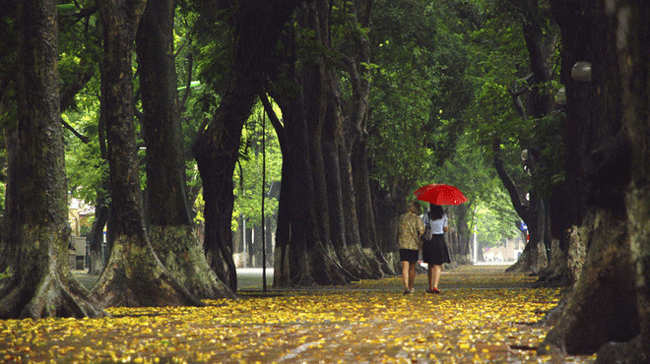
Phan Dinh Phung Street – the most romantic street in Hanoi
Halong Bay: Summer is the peak time for domestic tourists to visit Halong Bay. However, September is considered as an ideal time for international travelers. The rainfall reduces and you can enjoy swimming, kayaking, and sightseeing in this famous UNESCO Heritage site.
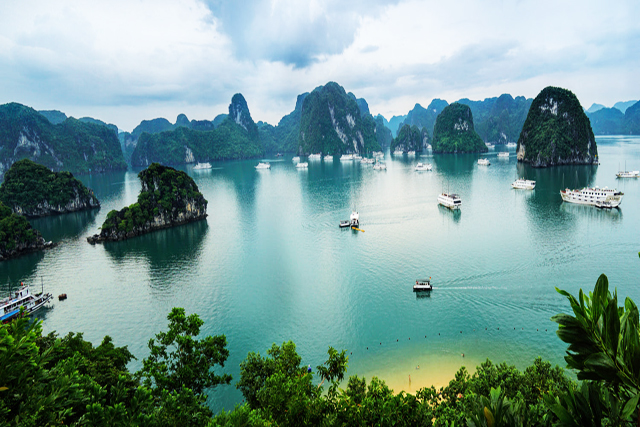
An overview of Halong Bay
Sapa: If you are interested in seeing rice terraces, we recommend you to take a tour to Sapa at the end of September or beginning of October. This is the harvest season when you can admire a romantic view of yellow terraced rice fields. Moreover, the weather is lovely with light breezes, which is extremely suitable for your hiking activities to Fansipan Mountain.
Cao Bang: The best time to enjoy Ban Gioc Waterfall’s spectacular view in Cao Bang is autumn. Ban Gioc is also one the most incredible waterfalls in Vietnam. This waterfall will not be as thunderous as in the rainy season (April to September).
Ha Giang: 320 km away from Hanoi, Ha Giang is located at the northernmost point of Vietnam. Ha Giang is famous for its green mountains, gorgeous rivers, blow-minding roads, diverse culture and of course buckwheat flowers. Don’t forget to have a Ha Giang tour to see buckwheat flowers at the end of autumn (September to November).
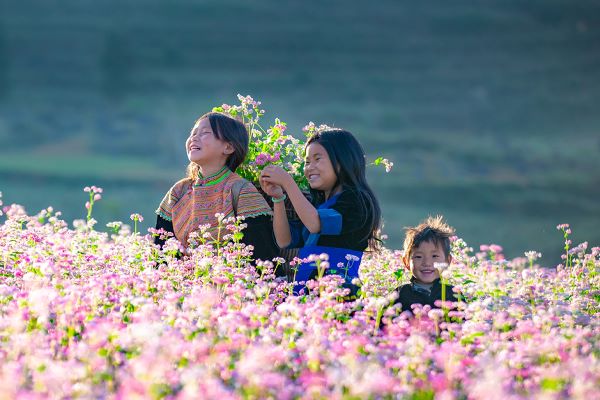
Buckwheat Flowers in Ha Giang, Vietnam
Winter season
Lang Son: If you are interested in romantic snowy scenery, mountainous areas are your destinations. Mount Mau Son (Lang Son Province) is considered an attractive place for snow watching. Surrounded by clouds and mountains, Mau Son is totally covered in white color in the winter which is spectacular to take photographs.
Mai Chau: 140 km from Hanoi, Mai Chau offers you off-the-beaten-track experience with peaceful sceneries and unique ethnic culture. Lac Village is one of the most notable attractions in Mai Chau with emerald rice paddles, beautiful stilt houses and tasty specialties such as sticky rice cooked in bamboo cylinders and bitter bamboo shoots. Mai Chau Tours will help you to completely explore this beautiful small town and discover ethnic minorities’s culture.
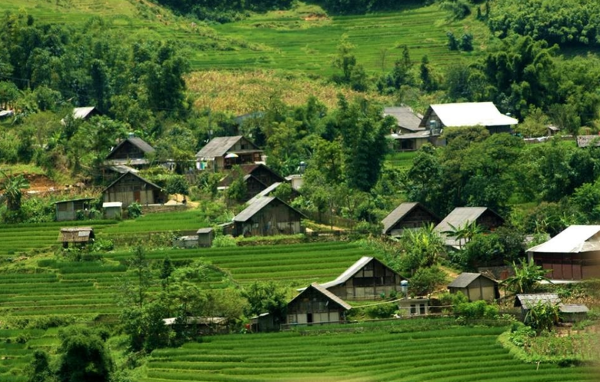
Lac Village, Mai Chau
Tips for traveling to the North of Vietnam
Spring season:
- Wear appropriate clothes when attending festivals in religious sites.
- Bring an umbrella in case there is drizzling rain.
- Bring medicine, humidity may cause sneezing.
- Take care of your belongings when attending a festival. There may be pickpockets concealing in the crowd.
- Pack some bug sprays: Mosquitoes may cause diseases, so don’t get caught without bug sprays in case the bugs are out.
Summer season:
- Water, water and water. Stay hydrated all the time.
- Bring sunscreen, sunglasses, and hats. Protect yourself from brutal sunlight.
- Due to high rainfall, the roads become more dangerous in the Northern mountainous area (Sa Pa, Ha Giang, Cao Bang, Mai Chau, etc.). Check with your tour operator about the local weather.
- There may be storms in Northern beaches in summer. Pay attention to the weather forecast before your trip.
- Prepare an umbrella or raincoat in case it rains.
Autumn season:
- Choose a prestigious local travel agency for Hanoi City Tours and Halong Bay Cruises so that you can enjoy the most attractive destinations in Northern Vietnam.
- Bring appropriate clothes. It will be a little bit cold in the evening, especially in the mountainous area.
- Prepare adequate gears and equipment for your hiking trip in the mountainous area.
- Enjoy the Mid Autumn festival and try our delicious Moon Cake.
Winter season:
- Bring warm clothes, gloves, hats, and boots to protect you from chilly weather in the mountainous area.
- Prepare all necessary medicines, coldness may cause flu.
- Keep some snacks handy, hunger may reduce blood sugar level which is very dangerous in winter.
- Don’t forget sunscreen: The winter sun can harm your skin as it is in the summer.
- The demand to visit the mountainous areas will be higher in the winter, so it will be hard for you to prepare transportation and book a hotel. Consult a reputable travel agency to plan your snow-watching trip in advance.
Read More:
- Vietnam Weather: Best time to visit Central Vietnam
- Vietnam Weather: Best time to visit the South of Vietnam
- Essential Travel Guides for First-time Travelers to Vietnam

